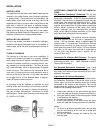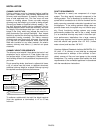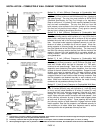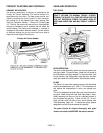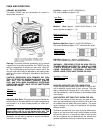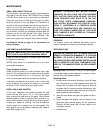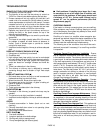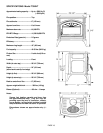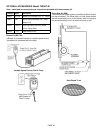CARE AND OPERATION
PAGE 15
WHY SEASONED WOOD?
The key to the success of a good fire that produces heat
from a woodstove is the wood. It needs to be well-seasoned
natural wood.
What does “Well-Seasoned” mean?
When a tree is cut down, the wood is green, full of sap and
moisture. This moisture content can exceed 80%, which
must be reduced to less than 20%. Wood properly seasoned
is then capable of generating the heat the stove was de-
signed to provide.
Green wood does not burn easily. Attempting to burn green
wood often results in a lot of smoke and very little fire. Time
is the most important factor in seasoning wood. Ideally the
moisture content should be reduced to 11-20%, although
very few of us will be able to check that figure. There are
several steps that should be taken to ensure that that you
come close to these figures.
SEASONING GUIDE
Softwoods – 6 months to 18 months
Hardwoods – 12 months to 24 months
Logs that are 5” diameter across or larger should be split in
half, three pieces if over 8 inches, and four pieces when over
a foot across. If the tree was fell 2 to 4 years ago, it still
needs to be cut, split, and seasoned for 6 to 24 months de-
pending on the wood.
WOOD STORAGE
Wood to be seasoned should be stacked in an area open
enough to ensure good air circulation on both sides – leaving
adequate space between woodpiles to walk comfortable. Do
not stack wood against a wall or building. It helps to elevate
the woodpiles off the ground (two 2 x 4’s running lengthwise
beneath the woodpile works well). This allows air to flow un-
der the bottom logs.
Wood that is kept outdoors, either covered with a tarp, or
not covered at all, will not burn well until it has been in an
enclose space for one to two months.



